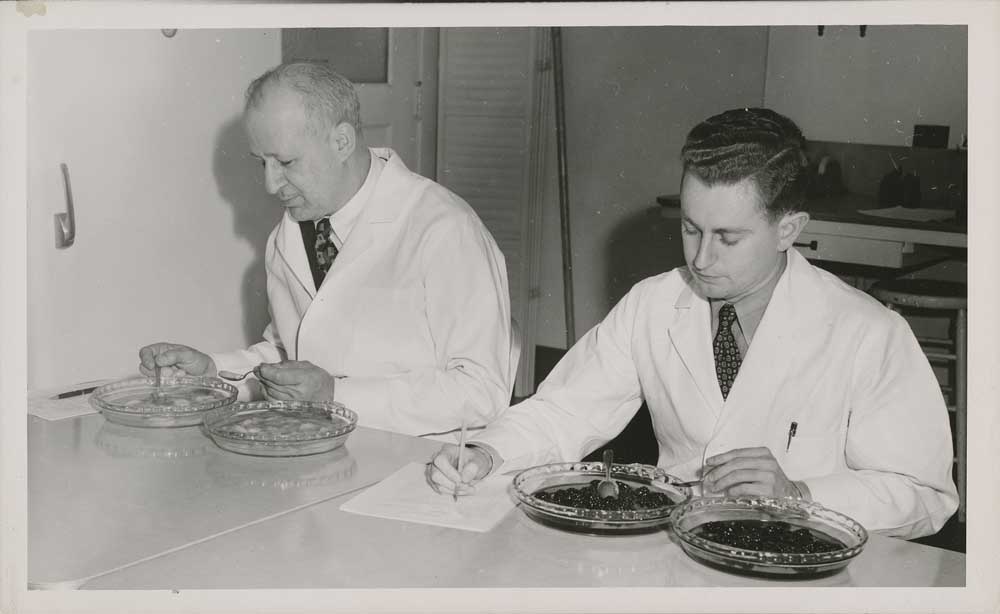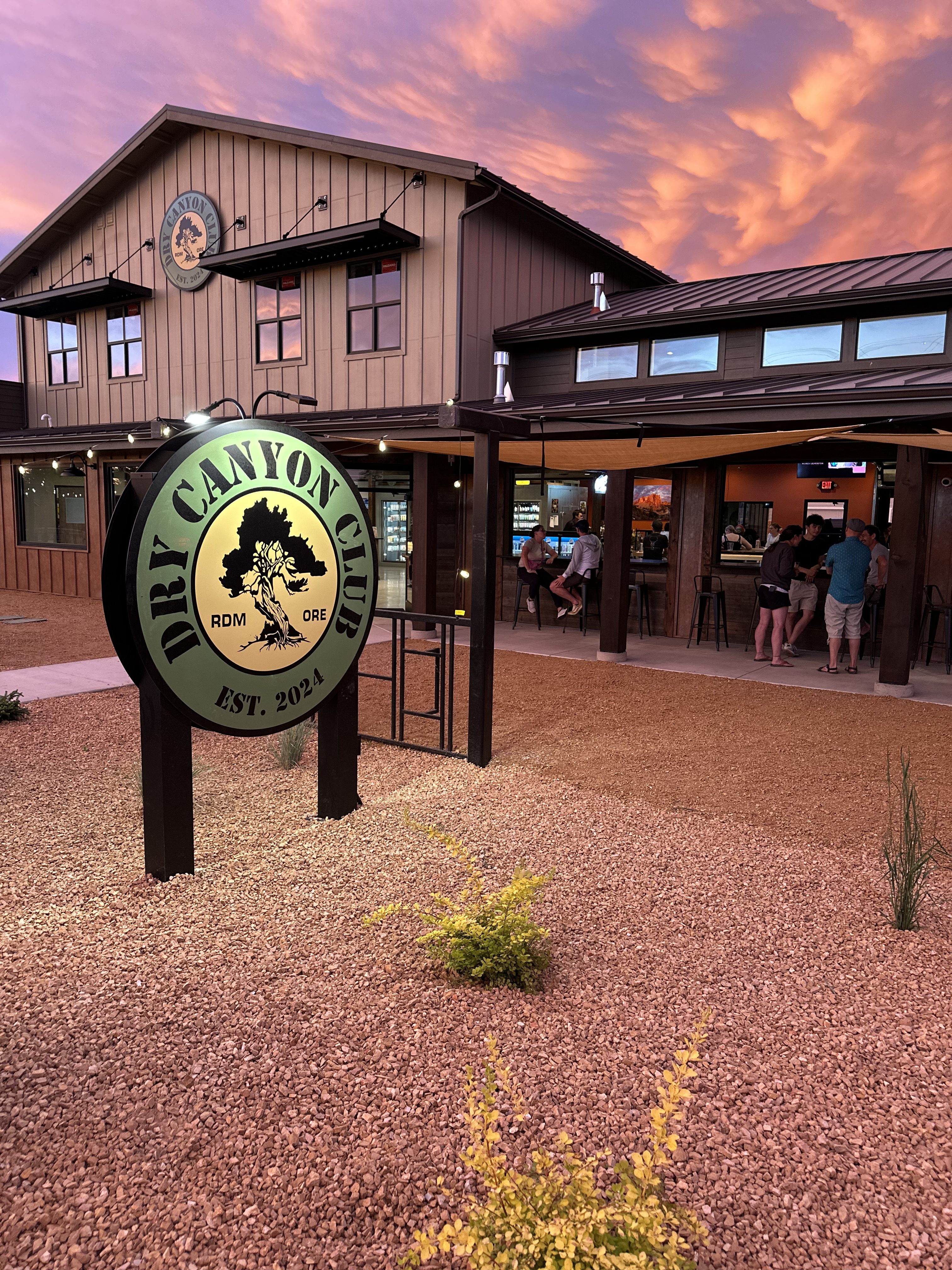Offbeat Oregon: Iconic foods with roots in Oregon include berries and tots
Published 2:00 am Tuesday, December 26, 2023

- Oregon State University Prof. Ernest Wiegand (left) and a student do a taste test of fruit for the Food Technology Department in 1948. The student appears to be testing blackberry cultivars, so perhaps he is doing the work for Prof. George Waldo, creator of the Marionberry.
Editor’s note: This is Part 2 in a series on iconic foods with roots in Oregon. Visit redmondspokesman.com to read the entire series.
Trending
The Marionberry, 1956
The Marion cultivar of blackberries has been the most widely planted blackberry in the U.S. since the early 1980s, and for anyone looking forward to some home-baked pie after Christmas dinner, Marionberries just might be involved.
Blackberries, as most Oregonians know all too well, are a sort of fruit that combines some of the worst qualities of a plant with some of the best. Few fruits are anywhere near as delicious as a ripe, juicy blackberry; but the vines tend to be sprawling and disorderly and covered with great spiky murder-thorns. At their worst, they grow astonishingly quickly, are very hard to eradicate, and shade out everything below them. The common invasive Himalayan blackberries that grow all over the state are the best example of this type.
Trending
In the mid-1930s when OSU professor George Waldo set out to breed what would become the Marionberry, there was almost a direct connection between the quality of the fruit, and the density and awfulness of the brambles it grew on. One could find blackberry varieties that were well behaved and almost thornless, but the fruits were small and not very juicy. Or one could find the nearest tangle of wild Himalayan blackberries and find the opposite.
Waldo set out to breed the perfect blackberry: one with delicious fruit AND well-behaved vines. He actually spent about two full decades on this quest, starting in 1935 when he cooked up a cultivar called Santiam by crossing Loganberries with Pacific Blackberries (the tiny ones frequently found on forest floors, with long not-very-spiny vines and few leaves). Then, in 1936, he crossed Santiam with the infamous and ubiquitous Himalayan blackberry to get a variety he called Chehalem.
Chehalem berries were tasty, but the vines they grew on were a little too reminiscent of their disorderly, horrible Himalayan parent. So Waldo made one more cross, breeding Chehalem berries with Olallieberries. (Olallie was another hybrid that Waldo had created the previous year by crossing two older traditional varieties: Youngberries and Black Loganberries).
The result was the Marion blackberry: A fast-growing but well-behaved vine, with thorns that were not overly vicious and fruits that practically melt in your mouth. Its main “bug” is really a “feature” for home growers and Farmer’s Market customers – the berry skins are so tender that they don’t take rough handling very well, so mechanical harvesting is tricky. They also are very sensitive to cold, so about the only place they grow well is the Willamette Valley. Most marionberries are still grown right in Marion County, the county where they were tested in and named after.
The Tater Tot, 1953
As we turn our attention to what food historian Heather Arndt Anderson calls “Oregon’s prodigal spud,” we are straying into distinctly non-Christmassy territory. And yet, in the few dozen short years since brothers Golden and Neef Grigg invented it, the Tater Tot has become as much a part of American comfort food as the Velveeta-drenched macaroni noodle.
It all got started just after the Second World War, when Golden and Neef rented a flash-freezing plant in Ontario (the town in Oregon, not the province in Canada). They were in the frozen vegetable business, specializing in sweet corn.
A few years later, their landlord went bankrupt, and the brothers bought the plant out of foreclosure and expanded their corn hustle into a full-blown frozen-foods company, planning to add frozen French fries to their offerings. Ontario being right on the Idaho border, the brothers — who actually lived on the Idaho side of the line — named their new company Ore-Ida.
By 1953 Ore-Ida was the biggest producer of frozen corn in the country. But the real money was in French fries. Another famous Idaho resident, J.R. Simplot, had figured out how to freeze potatoes without them turning black. Now the brothers wanted to use his system to create frozen, ready-to-cook fries; but this was turning out to be a bigger headache than they’d thought it would be.
The problem was, when a potato was cut up into fries, they needed a way to get rid of the irregular pieces and cut-off ends. They were having a hard time coming up with a mechanical solution to this, and customers were really not into buying a bag of French fries that was mostly half-inch-long slivers.
Then one day, a very confused salesman showed up to try to sell the brothers a prune-sorting machine. Of course, everyone got a good laugh when the salesman realized his error; but instead of hitting the road in search of the nearest actual fruit processor, he stuck around and visited for a bit. One thing led to another, and pretty soon the salesman was showing off his fruit sorter … and the brothers were thinking hard. The machine looked like it would, with the right modifications, do a pretty good job on potatoes as well.
To his probable surprise, when the salesman left the Griggs’ shop, he had an order in his pocket. And with the modifications the brothers had specified, it turned out to be just what they needed.
But now they had another problem — a good problem, but a problem nonetheless: Lots and lots of ends and bits of potatoes left over from the French fry cutting process.
They started out by feeding them to livestock. But the brothers hated this. There was nothing wrong with the potato bits they were getting; they were fit for human consumption. Feeding them to animals seemed like a waste.
So they tried a few things — ways to turn tiny chunks of potato into something people would want to eat. And one of the first things they tried was chopping the potatoes up fine, compressing them into a long, thin log like a giant pepperoni stick, and cutting the stick into segments.
Very quickly they figured out that they were onto something big.
The Tater Tots had their table debut the following year, when Golden and Neef brought a 15-pound bag of tots to the 1954 National Potato Convention. Neef persuaded the chef at the convention dinner to cook up the tots and serve a few of them on small saucers next to each diner’s plate.
“These were all gobbled up faster than a dead cat could wag its tail,” Neef wrote, 35 years later.
“Bubble Skinner,” an article by James F. Morrell and Giles French published in the December 1968 issue of Oregon Historical Quarterly
“The Deschutes River Railroad War,” a book by Leon Speroff published in 2007 by Arnica Publishing
“The Deschutes Railroad War,” an article by Tor Hanson published at bendmagazine.com
“Railroads into Central Oregon,” an article by Ward Tonsfeldt and Paul G. Claeyssens published in 2004 by the Oregon Historical Society’s Oregon History Project








